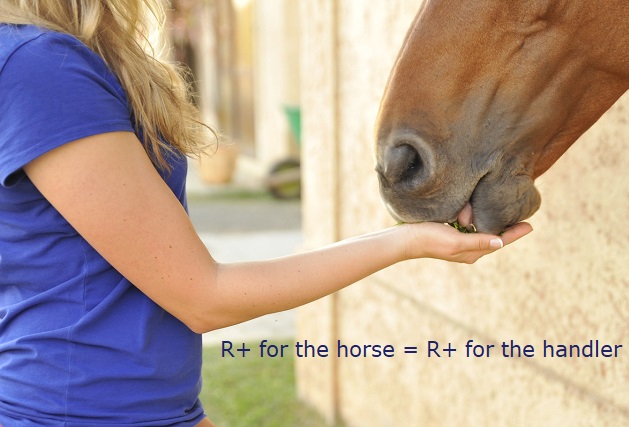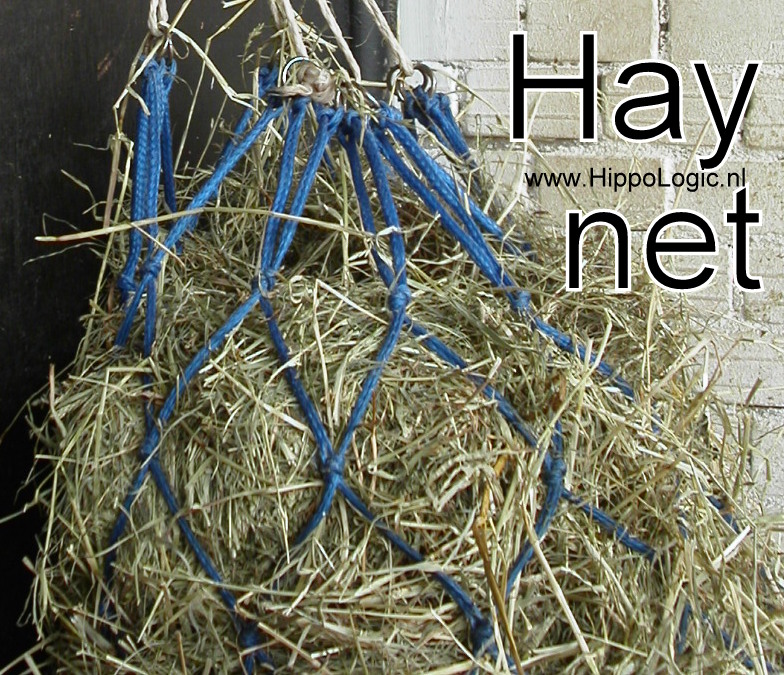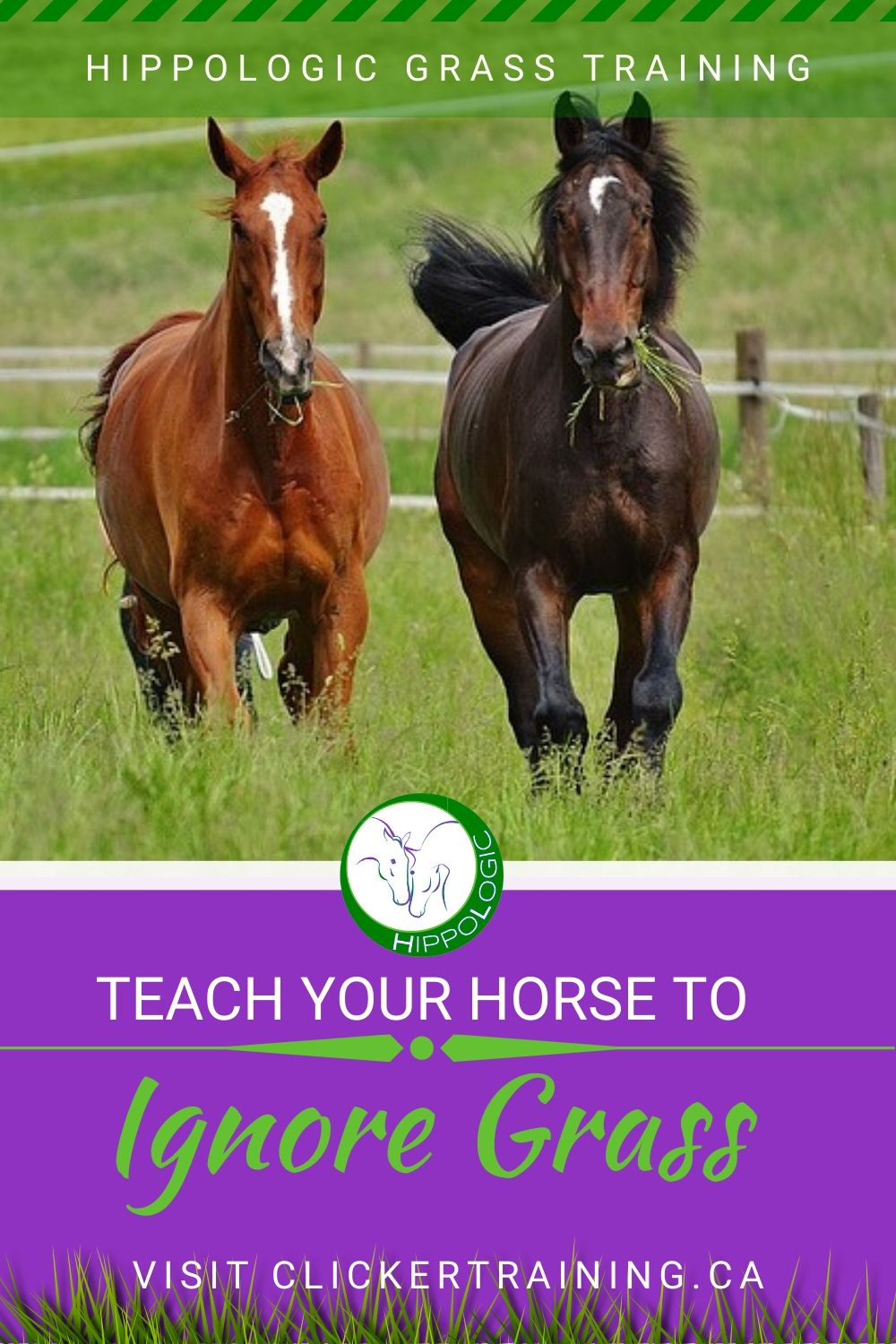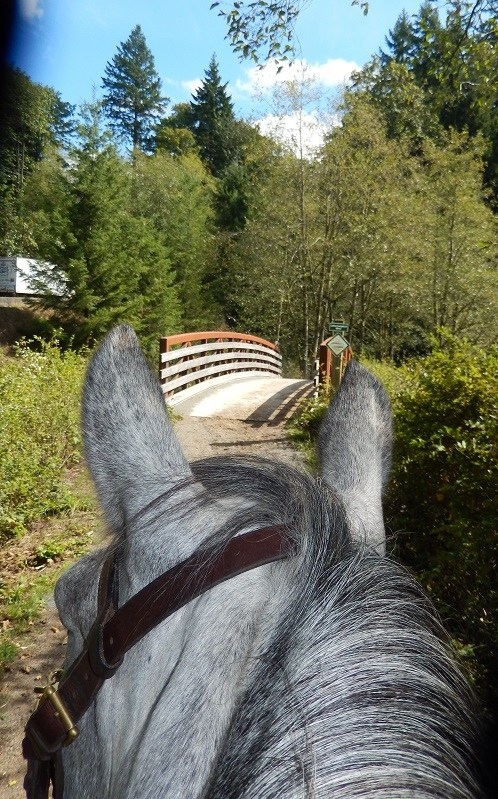If you have not yet started clicker training your horse, here is a good way to start. Start with Key Lesson (your key to success) Table Manners.

Table Manners for Horses is similar to etiquette for people: we don’t use manners naturally, they are learned behaviours. Just like we teach children to use knife and fork and sit with our feet below the table and wait our turn, we can teach our horses safe behaviours around food and treats. We also don’t walk into other peoples houses (strangers) to see what’s in the fridge, right? Our horses are not suppose to check what’s in our pockets either.
Clear criteria
In order to start clicker training well, you need to have clear criteria in your head. What do you want to reinforce and see more off? What behaviour would you like to eliminate from your relationship (biting, mugging, being pushed etc)?
Focus on what you want, is the most important in equine clicker training. That’s what you want to see more of and that why you need to be prepared to click for ~ HippoLogic
Tweet
Teach Your Horse to Behave Around Food: 5 Tips for Horses
Here are the criteria I like to teach horses who are new to positive reinforcement training:
✅ The horse needs to take the food off of the hand gently and calm: lips only and no teeth. No grabbing or moving super fast towards the food as if there’s a fear to miss out. That could be dangerous.

✅ The horse must learn to wait until the food (treat) is served to the lips and don’t move towards the food (the pocket with treats or hand that’s feeding the horse).
We -people- don’t go to the kitchen in a restaurant either so see where our food is. No, we wait patiently until it’s brought to us. We don’t start eating or grabbing the bread when the waitress still holds your plate. We wait until the plate is put in front of us before we start eating calmly.
✅ Only expect a treat after the bridge (click) and not at random.
Just like not every plate the waitress carries is for you. Only after you ordered you can expert food.
✅ The horse must be relaxed and in a calm state. Ears forward or relaxed to the side. This in combination with a closed muzzle and relaxed lips makes a friendly face. His must learn to trust the treat will come.
Just like in a restaurant you are polite and friendly to the waitress, not looking angry at the waitress when she bring the food to the table. You say ‘Thank you’ and smile.
✅ Make sure your horse is not hungry. In many restaurants you get or can order some bread and butter to change your hangry-ness into a better mood. Do the same for your horse: provide hay during training or train after a meal.

Horses are different than us. They are designed to eat 16 hours a day, so they will eat after a meal. If train when your horse is hungry, you’ll create problems that can be very hard to un-train, like grabbing the food and even biting.
Make sure positive reinforcement is a real win-win: win for you and win for your horse. Treat well ~ HippoLogic
Tweet
;Read more about starting clicker training here.
5 Tips for Trainers
The criteria above mean also that the trainer also needs to have a few good habits.
Clicker training is not only about training your horse. You-as trainer- need to develop good habits, too. ~ HippoLogic
Tweet
- Click first, then take a treat. Don’t make ‘pre-loading’ a habit or your horse will only focus on where your hands are. That really reinforces mugging
- Always deliver the treat to the mouth, so that your horse never has to look for the treat. Teach him that he can trust you to give it to him
- Make the food move to the horse, not the other way around. If you encourage your horse to move towards the food you easily reinforce the undesired mugging behaviour
- If you drop a treat, immediately present a new one. The one on the ground can be ignored, taken away if it’s sandy or be a bonus. If you or your horse drop treats often, use bigger treats
- Start with medium or low value treats (grass pellets, moist hay cubes) and not with high value treats (usually the sweet ones like carrot, apple and store bought treats)
What’s your biggest take-away from this blog? Use the comment below. ![]()
Join HippoLogic’s Facebook group
Become a member of our Happy Herd on Facebook and get access to my Facebook LIVE’s.








You must be logged in to post a comment.